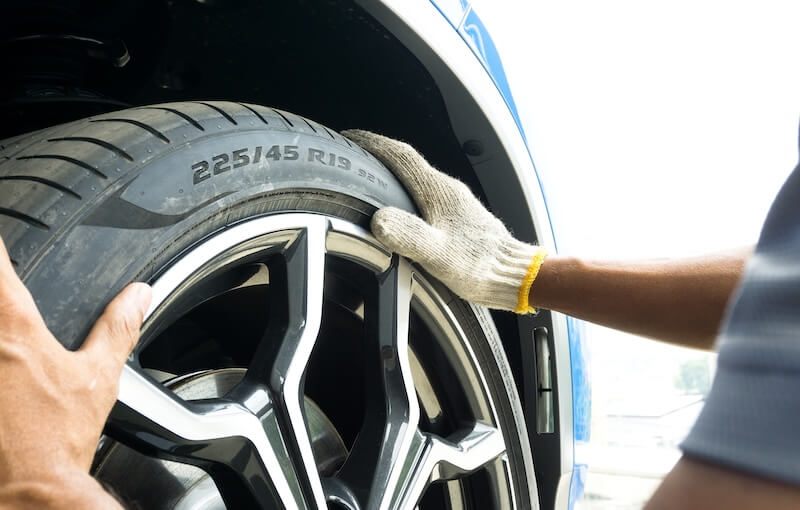When people think about collision repair, they usually picture body panels, paint jobs, and dent removal. But there’s one critical repair that often gets overlooked: wheel alignment. It doesn’t sound dramatic, but trust us—if your alignment is off after an accident, it can lead to a chain reaction of problems down the road.
At OHS Body Shop, we make it a point to check and correct alignment after any collision-related damage, even if it’s minor. That’s because even a slow-speed impact can shift the geometry of your vehicle’s suspension or steering components. The changes might not be visible to the eye, but your car will definitely feel it—and so will your tires, your fuel economy, and your safety.
Let’s break down what alignment is, how it gets affected in a crash, and why it should never be skipped after a repair.
What Exactly Is Alignment?
Alignment refers to how your wheels are positioned relative to the car’s body and to each other. When your vehicle’s alignment is correct, all four wheels are pointing in the right direction and sitting at the proper angles. That ensures smooth handling, even tire wear, and stable driving.
There are a few key angles involved in alignment: camber (tilt of the wheel inward or outward), toe (how much the wheels point toward or away from each other), and caster (the angle of the steering axis). These angles are extremely precise—measured in fractions of degrees—and your car relies on them being correct to drive properly.
How Collisions Knock Alignment Off
It doesn’t take a major wreck to mess up your alignment. Hitting a curb, slamming into a pothole, or getting tapped in a parking lot can all be enough to shift your suspension or steering components. During a collision, the impact can bend tie rods, struts, control arms, or the frame itself—any of which will throw off alignment.
Sometimes the symptoms are immediate. Maybe your steering wheel feels crooked, or your car starts drifting to one side. Other times, the effects are subtle and develop over weeks. You might notice that your tires are wearing out faster on one side, or that the car just feels “off” when you’re driving straight.
That’s why we always recommend a full alignment check any time your vehicle has sustained collision damage—even if you don’t notice a problem right away.
Why Post-Collision Alignment Is a Must
When your alignment is off, you’re not just dealing with a mild inconvenience. You’re facing real safety and performance risks. For starters, misaligned wheels can make it harder to control your car—especially at higher speeds or in slippery conditions. Your car might respond unpredictably to steering input, and braking distances can be affected too.
Then there’s the issue of tire wear. If your wheels are out of alignment, the tires wear unevenly. That means they won’t last as long, and you’ll be back in the tire shop sooner than expected. Bad alignment also puts extra strain on your suspension, steering components, and even your engine—especially if the vehicle is fighting against its own geometry just to go straight.
And let’s not forget fuel efficiency. Misaligned wheels create extra rolling resistance, which forces your engine to work harder. That translates into more fuel consumption, higher costs at the pump, and more emissions over time.
Our Alignment Process at OHS Body Shop
At OHS Body Shop, alignment isn’t just a quick glance at your wheels—it’s a precise diagnostic process. We use computerized alignment equipment that measures your vehicle’s suspension angles against factory specifications. If anything is even slightly off, we catch it.
We also inspect the condition of your suspension and steering components to make sure nothing is bent, loose, or worn out. If any parts need replacing, we take care of it before aligning the wheels. Once everything is squared away, we recalibrate your vehicle’s alignment to exact manufacturer standards—no guessing, no shortcuts.
This level of precision is what sets professional collision repair apart. It’s not just about making your car look fixed—it’s about making sure it drives like it was never in a crash at all.
Alignment and ADAS: A Critical Combo
Here’s something many drivers don’t realize: modern vehicles with ADAS (Advanced Driver Assistance Systems) rely heavily on proper alignment. Features like lane keep assist, adaptive cruise control, and parking sensors all use information that assumes your wheels are pointing in the right direction.
If your alignment is off, your ADAS features may not work correctly—or worse, they may give false readings. That’s why we often pair wheel alignment with sensor recalibration when needed. It’s all part of making sure your car is truly road-ready.
Final Thoughts for Montana Drivers
If you’ve had a collision, don’t assume everything is fine just because your vehicle looks okay. Alignment issues can sneak up on you and lead to long-term problems that cost more to fix down the line. A quick check today can save you hundreds of dollars and keep you safer behind the wheel.
At OHS Body Shop in Kalispell, we know Montana roads can be rough—and collisions are a part of life here. Whether you’ve been in a big crash or just nudged a snowbank, we’re here to make sure your vehicle is repaired properly from top to bottom… and from tire to tire.
Let us take a look and realign your vehicle with precision, care, and expert attention. Because safe driving isn’t just about good brakes or fresh paint—it’s about everything working together exactly as it should.

